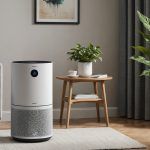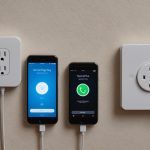Introduction to Smart Home Management
Smart home technology has revolutionized how we interact with our living spaces, offering unprecedented levels of comfort and convenience. At the heart of smart home management lies the integration of various devices that can be controlled remotely or automatically. This involves leveraging smartphone supervision, a critical component for effective management, enabling users to command their environments with a touch or voice command.
However, managing a smart home isn’t always straightforward. The benefits, such as energy savings and enhanced security, can be overshadowed by the challenges users face. This includes the compatibility of devices and ensuring effective control over all aspects of the smart environment. Miscommunication between devices and the complexity of configurations often cause frustration, emphasizing the importance of intuitive smartphone applications for seamless device management.
This might interest you : Ultimate Guide to Effortlessly Connecting Your Smart Plug to Your Smartphone: A Step-by-Step Tutorial
Navigating this tech landscape requires understanding the intricacies of various systems and platforms. Users commonly struggle with connectivity issues and learning how to balance manual control with automation for optimal efficiency. Addressing these challenges with robust solutions is key to enhancing the user experience and maximizing the benefits of smart home technology. This exploration of effective strategies can help users make informed decisions, ensuring their smart homes run smoothly.
Essential Tools and Apps for Smart Home Control
Smart homes thrive on the synergy between diverse devices and robust smart home apps. These applications streamline device control and pinpoint necessary management tools for everyday tasks. Ensuring a seamless connection between gadgets, smart home apps function as the primary bridge, enhancing user experience.
Also to read : Master Your Mobile: Effortlessly Control Smart Home Air Purifiers for Fresh Indoor Atmosphere
Recommended Smart Home Management Apps
When choosing an app, consider its capacity to monitor, adjust, and synchronize different devices. Leading options include platforms with user-friendly interfaces, allowing simple navigation and effective management.
Key Features to Look For
Look for features that support automation and customization. Effective apps provide compatibility with voice assistants, deliver real-time updates, and support multi-device setups. Notifications and remote access capabilities are crucial for remote management.
Compatibility with Devices
Compatibility is essential for smooth functioning. Select apps that integrate with a wide range of brands and models. Ensure that the app supports both popular and niche smart devices, offering versatility and flexibility in setup.
By focusing on these core aspects, users can enjoy efficient management, enhancing the overall functionality of their smart homes.
Step-by-Step Instructions for Device Setup
Setting up smart devices can seem daunting, but a systematic approach simplifies the process. Begin with pre-installation checks, ensuring your home router supports the required frequency bands and that you have access to the smartphone supervision app associated with the device. This ensures compatibility and smooth integration into your smart home ecosystem.
Pre-installation Checks and Requirements
Before installation, verify that the device is compatible with your existing infrastructure. This involves checking power source requirements, connection protocols, and ensuring your smartphone has the necessary apps installed for smart home management. Keep your Wi-Fi password handy and arrange the gadgets within adequate signal range for optimal performance.
Installation Procedures for Common Devices
Most smart devices follow a straightforward setup process. Generally, plug in and power up the device, then use the smartphone app to scan for the device. Follow the on-screen instructions for connection, which typically involve syncing through a QR code or manually entering the device’s network credentials. Once connected, test the device to confirm its response and functionality within the system.
Troubleshooting Installation Problems
Encounter issues? Common problems involve network settings and device responses. Reset the device, check Wi-Fi settings, and ensure there are no obstacles disrupting signals. Consult the user guide for specific error messages and solutions, making sure your system is up-to-date for effective control and operation.
Troubleshooting Common Smart Home Issues
Experiencing issues with your smart home devices can be frustrating, but most problems have straightforward solutions. Understanding these devices’ common quir
Automation Techniques for a Smarter Home
Smart home automation transforms how we live, combining device programming with efficiency for comfort and convenience. By creating effective automation routines, users can minimize manual tasks and maximize productivity at home.
Creating Effective Automation Routines
Effective routines rest on careful planning and understanding of daily habits. Users can set lights to turn on at dawn or coffee makers to start brewing in the morning. These routines save time and ensure tasks are handled automatically, enhancing overall efficiency.
Utilizing Sensors and Triggers
Sensors and triggers are pivotal in smart home automation. Motion sensors can activate lights when someone enters a room, while temperature sensors adjust thermostats according to the weather. By accurately configuring sensors, homeowners benefit from a responsive living environment tailored to their needs.
Integration with Other Smart Devices
Seamless integration across devices is essential for a cohesive smart home ecosystem. Devices should communicate fluently with each other. For example, integrating smart speakers with security systems allows for voice-controlled alerts. Cross-device synchronization ensures that all systems function harmoniously, providing a truly interconnected home experience. Embrace these automation techniques to streamline your routine and elevate your smart home’s potential.
Troubleshooting Common Smart Home Issues
Facing problems with smart home devices can be frustrating, but solutions often exist just a few troubleshooting steps away. Device errors lead to connectivity issues or unexpected malfunctions, but with proper guidance, most hurdles are manageable. Here’s a step-by-step approach to resolving typical issues and maintaining optimal device performance.
Common Issues Encountered with Smart Home Devices
Common problems include connectivity glitches, where devices lose their network link, or unresponsive devices that fail to execute commands. Such issues often stem from incorrect settings or firmware updates. Understanding these potential pitfalls can preempt costly disruptions.
Step-by-Step Troubleshooting Guide for Frequent Problems
- Restart Devices: Begin by powering off the device and rebooting, as this often resolves minor software glitches.
- Check Network Settings: Verify that your network is stable and security settings are not blocking the device.
- Update Software: Ensure that firmware and applications are up-to-date, replacing obsolete protocols with improved versions.
Expert Tips for Maintaining Device Performance
Regularly review and adjust device settings, maintaining alignment with app updates ensuring continuity. Reduce network congestion by limiting simultaneous connections. Frequently revisit device guides, staying abreast of optimal configurations and advanced solutions, fostering a seamless smart home experience.
Enhancing Smart Home Security
In the realm of smart home security, safeguarding your environment starts with understanding the potential threats. Cyber risks arise from interconnected devices, necessitating vigilant device protection strategies to preserve your privacy and safety. Regular safety measures are pivotal to mitigate these vulnerabilities.
Best Practices for Securing Your Devices
To enhance protection, routinely update your devices’ firmware and change passwords frequently. Implement two-factor authentication where possible, and ensure your network security settings, like WPA3 encryption, are robust against external threats. Securing your smart home is a proactive process that demands consistent attention and adaptation.
Utilizing Security Features in Apps
Make the most of integrated app security features. Many smart home apps offer real-time alerts, allowing swift action against potential breaches. These notifications, combined with remote monitoring, empower instant responses to security incidents. Stay informed of app updates that enhance these protective capabilities.
Regular Maintenance and Updates
Consistent maintenance underpins strong device protection. Ensure your smart devices are regularly checked for malware and that all security patches are applied promptly. This vigilance aids in fending off threats and benefits from ongoing advancement in security technology. Proactive care ensures the safety and integrity of your smart home system.











